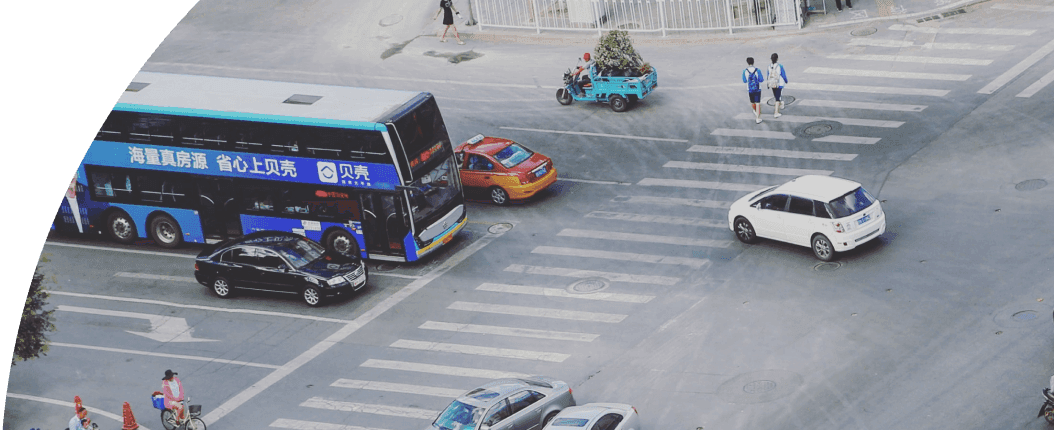
News
By Raveena John, London Weier, July 21, 2025
Over the past decade, more communities have introduced policies that integrate both Complete Streets and Green Streets. These approaches offer a range of environmental benefits while reinforcing the goals of the Complete Streets movement. These efforts show how streetscapes can be designed not only for safety and mobility, but also to enhance sustainability and climate resilience.
What are Green Streets?
Roads are a major source of pollution in urban environments: asphalt releases compounds linked to asthma and car tires are increasingly linked to microplastics and toxic chemicals in waterways. Pavement is a well-known contributor to the heat island effect, where urban areas are significantly hotter on average than the vegetated surrounding areas, and to urban flooding, since water can’t soak into the ground when it’s covered. Green Streets not only reduce the area of paved surfaces, but actively mitigate many of the harmful environmental and public health impacts of roads, while improving people’s health and wellbeing.
Using the public right-of-way for stormwater infrastructure, street trees, and other environmental strategies makes a street a Green Street. Some other examples include: planted bump outs and chicanes, bioswales along the curb, parklets, and more. These components are designed to work with the ecosystem, such as the soil type and natural flow of water, for the greatest benefit to habitats, air and water quality, and public health and wellbeing. Green Streets bring an ecological component into transportation planning, making the impact of our cities on the natural environment more careful, thoughtful, and restorative.

Complete and Green Streets go hand-in-hand
Green Streets and Complete Streets work in tandem, helping to ensure that streets are designed to serve people and the planet. Building a Complete Streets network requires accommodating all road users in every project. Green Streets offer a sustainable way to build this network without worsening environmental impacts. Integrating green infrastructure into Complete Streets policies delivers measurable benefits. Planted buffers can protect bike lanes, while bioswales within chicanes help slow traffic. Street trees add visual friction to reduce vehicle speeds and offer essential shade for pedestrians and cyclists. Using Green Streets as part of Complete Streets policies brings even more benefits to all users and improves the surrounding environment for everyone.

Green Streets in Nashville
Nashville’s Executive Order Number 045: Green and Complete Streets Policy stands out as one of this year’s top-scoring examples in SGA's 2025 Best Complete Streets Policies report. This policy weaves together environmental, public health, and well-being objectives with Green Streets strategies, ensuring that sustainability is central to every project. Guided by its “Environment and Health” principle, the policy targets improvements in air quality, stormwater management, and urban heat reduction through initiatives like planting shade trees and vegetation—all while promoting active transportation. By embedding green infrastructure at the core of its project selection, Nashville offers a compelling model for building healthier, more resilient communities.

Related News

© 2026 Smart Growth America. All rights reserved
Site By3Lane Marketing








